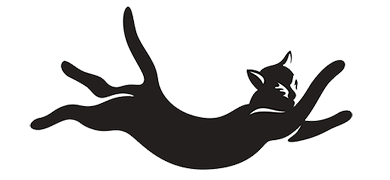Critical Alignment Therapy & Yoga
Institute, Moscow
Institute, Moscow
Classes
Beginner

Beginner classes introduce you to the core principles of Critical Alignment. Specialised props help you learn how to identify specific areas of tension in your body. By releasing this tension, we become conscious of the connections between the bones and how they support good alignment.
These connections are the building blocks of every asana. We teach you how to apply relaxation to every activity, so that tension and stress lose their grip.
Emphasis may be on a certain connection and how to use it in different asanas. The teacher might focus a class on one or a few asanas in-depth. Some classes may be more dynamic, others more meditative. In technical classes, the teacher explains the technique in detail. Some classes are more philosophical and deal with questions like 'why do I practice'.
These classes are accessible for both absolute beginners and more experienced students coming from another yoga background.
These connections are the building blocks of every asana. We teach you how to apply relaxation to every activity, so that tension and stress lose their grip.
Emphasis may be on a certain connection and how to use it in different asanas. The teacher might focus a class on one or a few asanas in-depth. Some classes may be more dynamic, others more meditative. In technical classes, the teacher explains the technique in detail. Some classes are more philosophical and deal with questions like 'why do I practice'.
These classes are accessible for both absolute beginners and more experienced students coming from another yoga background.
Intermediate

Intermediate classes are a follow up for students who know the basic principles of movement. They demand that students have a more independent attitude. The number and complexity of asanas increases.
Poses are held longer, in order to deepen relaxation in the body and extend the meditative and psychological processes. Timings play an important role in this setup.
Students perform up to 20 minutes of headstand and shoulderstand in every class.
These classes are designed for serious students who want to attend classes on a daily basis, or at the very least more than once per week.
The structure of the classes is as follows:
In addition to the daily practice of shoulderstand and headstand, each day of the week focuses on a specific category of asana:
Monday: Standing poses
Tuesday: Backbends
Wednesday: Forward bends
Thursday: Rotations
Friday: Surprise theme
Poses are held longer, in order to deepen relaxation in the body and extend the meditative and psychological processes. Timings play an important role in this setup.
Students perform up to 20 minutes of headstand and shoulderstand in every class.
These classes are designed for serious students who want to attend classes on a daily basis, or at the very least more than once per week.
The structure of the classes is as follows:
In addition to the daily practice of shoulderstand and headstand, each day of the week focuses on a specific category of asana:
Monday: Standing poses
Tuesday: Backbends
Wednesday: Forward bends
Thursday: Rotations
Friday: Surprise theme
CA 55+

These classes are the physical retirement of your life. Becoming older doesn't necessarily mean that we lose the positive connection with our bodies.
In CA 55+ classes, we give attention to essential parts of the body in the opposite way to what we might ordinarily do in daily life. Even older students living with years of accumulated tension see their alignment improve after each class. Their mobility and energy levels mobility increase. Fears about the uncertain future of aging turns into a relationship with the body relation based on trust and confidence.
Bodies that have experienced illness or injury can radiate still energy and self-confidence.
These classes challenge students in a mild and gentle way, but still there is the challenge of progress. Instead of accepting our issues, doing a little less every year, these classes help students to release tension and increase mobility.
You don't need to perform the asanas perfectly. The teachers know how to modify the exercises in ways that suit your needs. Some students might feel, 'I've left it for too long' or 'everyone else in the class will be better or more flexible than I am. But don't worry: your development in Critical Alignment can begin from any starting position. Our teachers give proper care to everyone.
There is no judgement or competition in these classes. We are here to improve the fulfillment of our needs together.
In CA 55+ classes, we give attention to essential parts of the body in the opposite way to what we might ordinarily do in daily life. Even older students living with years of accumulated tension see their alignment improve after each class. Their mobility and energy levels mobility increase. Fears about the uncertain future of aging turns into a relationship with the body relation based on trust and confidence.
Bodies that have experienced illness or injury can radiate still energy and self-confidence.
These classes challenge students in a mild and gentle way, but still there is the challenge of progress. Instead of accepting our issues, doing a little less every year, these classes help students to release tension and increase mobility.
You don't need to perform the asanas perfectly. The teachers know how to modify the exercises in ways that suit your needs. Some students might feel, 'I've left it for too long' or 'everyone else in the class will be better or more flexible than I am. But don't worry: your development in Critical Alignment can begin from any starting position. Our teachers give proper care to everyone.
There is no judgement or competition in these classes. We are here to improve the fulfillment of our needs together.
CA Therapy (CAT)

CAT students begin with a 60-minute private assessment. During the assessment, a Critical Alignment therapist listens to your story and the history of your complaint(s). After the conversation and a brief physical examination (that includes, for example, looking at your posture while sitting), the therapist will offer advice on how CAT can be tailored to meet your needs.
CAT is different from other physical therapies, which your therapist will explain. It will help you to develop a certain attitude through which you feel as responsible as the therapist in the process of healing.
Healing strongly depends on the depth of relaxation. Some students are able to go into deep relaxation from the beginning; others are fearful of releasing tension. In either case, it's not the method or therapist making that decision for you. The therapist can explain the exercises and what makes them safe, and the method gives you the tools for the release. But you are the only one who can make the decision to move in to relaxation.
During the assessment, the therapist might suggest that you to take one or two private sessions before joining group sessions. Some students need extra care and guidance before feeling ready to join the group classes.
The CAT assessment comes with a 10-class pass, paid together. When you make the decision to join, we offer you one of the Critical Alignment tools, a rubber strip, as a welcome gift.
During the assessment, your therapist will advise you to practise at home. These exercises are in group classes but very many people feel uncertain about practicing without a teacher present. You can do a private session with one of our therapists to help you feel comfortable doing the exercises independently.
It is allowed to record a private session like that to use it only for yoursef. That stimulates many to practice in between the classes.
CAT is different from other physical therapies, which your therapist will explain. It will help you to develop a certain attitude through which you feel as responsible as the therapist in the process of healing.
Healing strongly depends on the depth of relaxation. Some students are able to go into deep relaxation from the beginning; others are fearful of releasing tension. In either case, it's not the method or therapist making that decision for you. The therapist can explain the exercises and what makes them safe, and the method gives you the tools for the release. But you are the only one who can make the decision to move in to relaxation.
During the assessment, the therapist might suggest that you to take one or two private sessions before joining group sessions. Some students need extra care and guidance before feeling ready to join the group classes.
The CAT assessment comes with a 10-class pass, paid together. When you make the decision to join, we offer you one of the Critical Alignment tools, a rubber strip, as a welcome gift.
During the assessment, your therapist will advise you to practise at home. These exercises are in group classes but very many people feel uncertain about practicing without a teacher present. You can do a private session with one of our therapists to help you feel comfortable doing the exercises independently.
It is allowed to record a private session like that to use it only for yoursef. That stimulates many to practice in between the classes.
J-spine classes

J-spine classes are a special feature of the CAY approach to alignment.
It is (still) medical dogma that the upper back should be rounded. We don't agree with that.
Gert van Leeuwen, the founder of CAT/Y, found through careful observation, deep practice and decades of teaching experience that, when the upper back becomes straighter, many pains in other parts it the body disappeared.
He calls the upper back the source of all our tensions.
When the upper back starts to curve it becomes more and more immobile, causing compensatory movements elsewhere. The neck, shoulders and lower back become overworked.
This is the reason why often simple complaints become chronic in sports and daily activities. For yoga practitioners from other styles, it is important to know that the J-spine makes your practise safe and joyful. It makes it possible to add the meditative aspect of yoga to your asana practice.
It is (still) medical dogma that the upper back should be rounded. We don't agree with that.
Gert van Leeuwen, the founder of CAT/Y, found through careful observation, deep practice and decades of teaching experience that, when the upper back becomes straighter, many pains in other parts it the body disappeared.
He calls the upper back the source of all our tensions.
When the upper back starts to curve it becomes more and more immobile, causing compensatory movements elsewhere. The neck, shoulders and lower back become overworked.
This is the reason why often simple complaints become chronic in sports and daily activities. For yoga practitioners from other styles, it is important to know that the J-spine makes your practise safe and joyful. It makes it possible to add the meditative aspect of yoga to your asana practice.
Meditation

Meditation deals with the question 'Who am I'?
Do we know ourselves? Our strategies, our negative sides, our tensions?
These philosophical questions are very often approached from thinking and analysis.
Thought is the general approach of classical meditation techniques. Or rather, the absence of thought is the goal we need to reach.
How can the absence of thought create healthy thinking?
The body gives us an answer to this intriguing question.
According CAY, the tension in our thinking and the tension in our body are one movement. The connective negative force which reaches both the body and our brain is stress.
By breaking the tensions in our body we break the mental tensions we have built up based on trauma and cultural conditioning.
Gradually, we move away from the old stressful images which are stored in our subconscious emotional brain.
Through the body, we can reach our subconscious and change on that deep level.
When we go deeper in the release of body tension, new feelings arise: connective feelings, as we call them. These feelings are non-violent and restore our sense of safety.
Feeling safe in your body counters old images of fear. Finally, we are able to move from a fearful dependent brain, which carries our images from childhood, into a independent brain, which is free of these negative images in here and now.
When a fearless brain begins to connect itself with a body that radiates safety, there is stillness.
Total stillness does not mean emptiness; rather, it is a stillness full of energy, joy and care.
It is the energy of support and giving care to all.
This silent brain is empathetic. It could perhaps be compared with the silence in the brains of astronauts the moment they turn around and see the planet Earth hanging in space for the first time. They see how local conflicts dissolve in this vulnerable image, and feelings of care and responsibility start to arise.
Experiencing our body as a whole, without fear or conflict, may give us a similar experience of compassion to all on this planet. And we feel the energy to act according to these values.
Do we know ourselves? Our strategies, our negative sides, our tensions?
These philosophical questions are very often approached from thinking and analysis.
Thought is the general approach of classical meditation techniques. Or rather, the absence of thought is the goal we need to reach.
How can the absence of thought create healthy thinking?
The body gives us an answer to this intriguing question.
According CAY, the tension in our thinking and the tension in our body are one movement. The connective negative force which reaches both the body and our brain is stress.
By breaking the tensions in our body we break the mental tensions we have built up based on trauma and cultural conditioning.
Gradually, we move away from the old stressful images which are stored in our subconscious emotional brain.
Through the body, we can reach our subconscious and change on that deep level.
When we go deeper in the release of body tension, new feelings arise: connective feelings, as we call them. These feelings are non-violent and restore our sense of safety.
Feeling safe in your body counters old images of fear. Finally, we are able to move from a fearful dependent brain, which carries our images from childhood, into a independent brain, which is free of these negative images in here and now.
When a fearless brain begins to connect itself with a body that radiates safety, there is stillness.
Total stillness does not mean emptiness; rather, it is a stillness full of energy, joy and care.
It is the energy of support and giving care to all.
This silent brain is empathetic. It could perhaps be compared with the silence in the brains of astronauts the moment they turn around and see the planet Earth hanging in space for the first time. They see how local conflicts dissolve in this vulnerable image, and feelings of care and responsibility start to arise.
Experiencing our body as a whole, without fear or conflict, may give us a similar experience of compassion to all on this planet. And we feel the energy to act according to these values.

